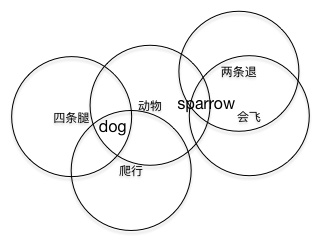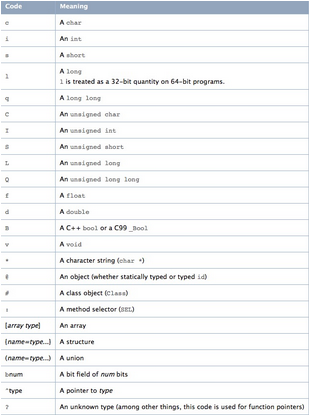iOS架構設計解耦的嘗試之VC邏輯AOP切割
上一篇文章iOS架構設計解耦的嘗試之模塊間通信中提到要說一下全局UI堆棧是怎麼維護的。要寫的時候發現,這個東西背後還有一個更有意思的東西:使用AOP對VC的業務邏輯進行切割。在DZURLRoute中所使用到的全局UI堆棧就是基於該思想構建出來的。這一部分的成果在庫DZViewControllerLifeCircleAction中總結成了Code(Talk is cheap. Show me the code)。而我們在iOS架構設計系列之解耦的嘗試之變異的MVVM中提到了通過MVVM來進行解耦,而這篇文章我們又通過另外一種方式AOP來嘗試進行解耦。感覺這一年在瘋狂的解耦:)。
AOP
先從AOP說起,其實在之前的文章中或者開發的庫中已經涉及到過很多次。比如對於Instance進行邏輯注入的庫MRLogicInjection,基於MRLogicInjection的應用方案用於相應區域擴展的DZExtendResponse、用於放重復點擊的DZDeneyRepeat、用於界面上紅點提醒的MagicRemind。這一年對於AOP也算有了一個比較深入的實踐。而這次要說的VC邏輯切割,其實也算是AOP的一個實踐。說句題外話,Objective-C是門神奇的語言,他提供的動態性,讓我們可以對其進行很多有意思的改造,把OC改造成一個更好用的工具。而對其進行AOP改造就是我發現的非常有意思的一個事情。
在軟件業,AOP為Aspect Oriented Programming的縮寫,意為:面向切面編程,通過預編譯方式和運行期動態代理實現程序功能的統一維護的一種技術。AOP是OOP的延續,是軟件開發中的一個熱點,也是Spring框架中的一個重要內容,是函數式編程的一種衍生范型。利用AOP可以對業務邏輯的各個部分進行隔離,從而使得業務邏輯各部分之間的耦合度降低,提高程序的可重用性,同時提高了開發的效率。
上面這段文字摘自百度百科。對於AOP做了一個非常好的解釋,點擊鏈接可以進去看看具體的內容。關於AOP只簡短的說一下我自己的理解,以作補充。
OC本來是個OOP的語言,我們通過封裝、繼承、多態來組織類之間的靜態結構,然後去實現我們的業務邏輯。只不過有些時候,嚴格遵循OOP的思想去設計繼承結構,會產生非常深的繼承關系。這勢必要增加整個系統的理解復雜度。而這並不是我們希望的。另外一點,我們講究設計的時候能夠滿足開閉原則,對變化是開放的,對於修改是封閉的。然而當我們的類繼承結構比較復雜的時候,就很難做到這一點。我們先來看一個比較Common的例子:
└── Object
└── biont
├── Animal
│ ├── cat
│ └── dog
└── plant
我們現在要構建一個用於描述生物的系統(精簡版),第一版我們做出了類似於上面的類結構。我們在Animal類中寫了cat和dog的公有行為,在cat和dog中各自描述了他們獨有的行為。這個時候突然發現我們多了一個sparrow物種。但是呢我們在Animal中描述的是動物都有四條腿,而sparrow只有兩條腿,於是原有的類結構就不能滿足現在的需求了,就得改啊。
└── Object
└── biont
├── Animal
│ ├── flying
│ │ └── sparrow
│ └── reptile
│ ├── cat
│ └── dog
└── plant
為了能夠引入sparrow我們修改了Animal類,將四條腿的描述放到了reptile類中,並修改了Cat和Dog的繼承關系。修改的變動量還是不小的。引入了兩個新類,並對原有三個進行比較大的改動。
而如果用AOP的話我們會怎麼處理這個事情呢?切割和組合。

我們會將四條腿獨立出來,爬行切割出來,兩條腿切割出來,會飛切割出來 。。。然後dog就是四條腿爬行的動物。sparrow就是兩條腿會飛的動物。沒有了層次深的類繼承結構。更多的是組合,而一個具體的類更像是一個容器,用來容納不同的職責。當把這些不同的職責組合在一起的時候就得到了我們需要的類。AOP則提供一整套的瑞士軍刀,指導你如何進行切割,並如何進行組合。這也是我認為AOP的最大魅力。
DZViewControllerLifeCircleAction 對VC進行邏輯切割和組合
類似於上面我們提到的例子,我們在寫ViewController的業務邏輯的時候,也有可能造成非常深的繼承結構。而我們其實發現在眾多的業務邏輯中,有些東西是可以單獨抽離出來的。比如:
我們會在頁面第一次viewWillAppear的時候刷新一次數據,這個在TableViewController會這樣,在CollectionViewController的時候也會這樣。
我們會在生命周期打Log,對用戶的使用路徑進行上報。
…
有些事情我們通過類集成來做了,比如打Log,找一個跟類,在裡面把打Log的邏輯寫了。但是當發現在繼承樹的末端有一個ViewController不需要打Log的時候就尴尬了。得大費周折的去改類結構,來適配這個需求。但是,如果這些業務邏輯像是積木一樣,需要的時候拿過來用,不需要的時候不管他,多好。這樣需要打Log的時候,拿過來一個打Log的積木堆進去,不需要的時候把打Log的積木拿走。
職責編程界面
而這就是AOP,面向切面編程。我們在ViewController上所選擇進行邏輯編制的切面就是UIViewController的各種展示回調:
- (void)viewWillAppear:(BOOL)animated - (void)viewDidAppear:(BOOL)animated - (void)viewWillDisappear:(BOOL)animated - (void)viewDidDisappear:(BOOL)animated
選擇這四個函數做為切面是因為在實際的編程過程中發現我們絕大多數的業務邏輯的起點都在這裡面,還有一些在viewDidLoad裡面。不過按照語義來講,viewDidLoad中應該是更多的對於VC中屬性變量的初始化工作,而不是業務邏輯的處理。在DZViewControllerLifeCircleAction的設計的時候,我們更多的是關注到ViewController的展示周期內會做的一些事情。就像:
在第一次展示的進行數據加載
展示的時候增加xxx的通知,在不展示的時候移除
在第一次展示的時候執行特殊的動作
構建特殊的頁面邏輯
。。。。。。
對應的我們在抽象出來的職責基類DZViewControllerLifeCircleBaseAction中提供了具體的編程接口:
/** When a instance of UIViewController's view will appear , it will call this method. And post the instance of UIViewController @param vc the instance of UIViewController that will appear @param animated appearing is need an animation , this will be YES , otherwise NO. */ - (void) hostController:(UIViewController*)vc viewWillAppear:(BOOL)animated; /** When a instance of UIViewController's view did appeared. It will call this method, and post the instance of UIViewController which you can modify it. @param vc the instance of UIViewController that did appeared @param animated appearing is need an animation , this will be YES, otherwise NO. */ - (void) hostController:(UIViewController*)vc viewDidAppear:(BOOL)animated; /** When a instance of UIViewController will disappear, it will call this method, and post the instance of UIViewController which you can modify it. @param vc the instance of UIViewController that will disappear @param animated dispaaring is need an animation , this will be YES, otherwise NO. */ - (void) hostController:(UIViewController*)vc viewWillDisappear:(BOOL)animated; /** When a UIViewController did disappear, it will call this method ,and post the instance of UIViewController which you can modify it. @param vc the instance of UIViewControll that did disppeared. @param animated disappearing is need an animation, this will be YES, otherwise NO. */ - (void) hostController:(UIViewController*)vc viewDidDisappear:(BOOL)animated;
一個獨立的職責可以集成基類創建一個子類,重載上述編程接口,進行邏輯編制。在展示周期內去寫自己都有的邏輯。這裡建議將這些邏輯盡可能的切割成粒度較小的邏輯單元。
在後續版本中也會考慮增加其他函數切入點的支持。
職責注入與刪除編程界面
而所有的這些職責,可以分成兩類:
通用職責,表現為所有的UIViewController都會有的職責,比如日志Log。
專用職責,比如一個UITableViewController,需要在展示時才注冊xxx通知。
因而,在ViewController中設計職責容器的時候,也對應的設計了兩個職責容器:
DZViewControllerGlobalActions()用來承載通用職責
可以通過接口:
/** This function will remove the target instance from the global cache . Global action will be call when every UIViewController appear. if you want put some logic into every instance of UIViewController, you can user it. @param action the action that will be rmeove from global cache. */ FOUNDATION_EXTERN void DZVCRemoveGlobalAction(DZViewControllerLifeCircleBaseAction* action); /** This function will add an instance of DZViewControllerLifeCircleBaseAction into the global cache. Global action will be call when every UIViewController appear. if you want put some logic into every instance of UIViewController, you can user it. @param action the action that will be insert into global cache */ FOUNDATION_EXTERN void DZVCRegisterGlobalAction(DZViewControllerLifeCircleBaseAction* action);
來增加或者刪除職責。
專用職責容器
可以通過下述接口進行添加或者刪除職責:
@interface UIViewController (appearSwizzedBlock) /** add an instance of DZViewControllerLifeCircleBaseAction to the instance of UIViewController or it's subclass. @param action the action that will be inserted in to the cache of UIViewController's instance. */ - (DZViewControllerLifeCircleBaseAction* )registerLifeCircleAction:(DZViewControllerLifeCircleBaseAction *)action; /** remove an instance of DZViewControllerLifeCircleBaseAction from the instance of UIViewController or it's subclass. @param action the action that will be removed from cache. */ - (void) removeLifeCircleAction:(DZViewControllerLifeCircleBaseAction *)action; @end
使用舉例
LogAction
先拿我們剛才一直再說的Log的例子來說,我們可以寫一個專門打Log的Action:
@interface DZViewControllerLogLifeCircleAction : DZViewControllerLifeCircleBaseAction
@end
@implementation DZViewControllerLogLifeCircleAction
+ (void) load
{
DZVCRegisterGlobalAction([DZViewControllerLogLifeCircleAction new]);
}
- (void) hostController:(UIViewController *)vc viewDidDisappear:(BOOL)animated
{
[super hostController:vc viewDidDisappear:animated];
[TalkingData trackPageBegin:YHTrackViewControllerPageName(vc)];
}
- (void) hostController:(UIViewController *)vc viewDidAppear:(BOOL)animated
{
[super hostController:vc viewDidAppear:animated];
[TalkingData trackPageEnd:YHTrackViewControllerPageName(vc)];
}
@end在該類Load的時候將該Action注冊到通用職責容器中,這樣所有的ViewController都能夠打Log了。如果某一個ViewController不需要打Log可以直接選擇屏蔽掉該Action。
UIStack
好了,這個才是最終要說的正題。扯了半天,其實就是為了說這個全局的展示的UIStack是怎麼維護的。首先要說明的是,此處的UIStack所維護的內容的是正在展示的ViewController的堆棧關系,而不是keywindow上ViewController的疊加關系。
當一個ViewController展示的時候他就入棧,當一個ViewController不在展示的時候就出棧。
因而在該UIStack中的內容是當前整個APP正在展示的ViewController的堆棧。而他的實現原理就是繼承DZViewControllerLifeCircleBaseAction並在viewAppear的時候入棧,在viewDisAppear的時候出棧。
@implementation DZUIStackLifeCircleAction
+ (void) load
{
DZUIShareStack = [DZUIStackLifeCircleAction new];
DZVCRegisterGlobalAction(DZUIShareStack);
}
- (void) hostController:(UIViewController *)vc viewDidAppear:(BOOL)animated
{
[super hostController:vc viewDidAppear:animated];
//入棧
if (vc) {
[_uiStack addPointer:(void*)vc];
}
}
//出棧
- (void) hostController:(UIViewController *)vc viewDidDisappear:(BOOL)animated
{
[super hostController:vc viewDidDisappear:animated];
NSArray* allObjects = [_uiStack allObjects];
for (int i = (int)allObjects.count-1; i >= 0; i--) {
id object = allObjects[i];
if (vc == object) {
[_uiStack replacePointerAtIndex:i withPointer:NULL];
}
}
[_uiStack compact];
}
....
@end同樣也注冊為一個通用職責。上面這兩個例子下來,就已經在ViewController中加入了兩個通用職責了。而這些職責之間都是隔離的,是代碼隔離的那種!!!
執行一次的Action, 專用職責的例子
在ViewController編程的時候,我們經常會寫一些類似於_firstAppear這樣的BOOL類型的變量,來標記這個VC是第一次被展示,然後做一些特定的動作。其實這個就是在VC所有的展示周期內只做一次的操作,真對這個需求我們可以寫一個這樣的Action:
/** The action block to handle ViewController appearing firstly. @param vc The UIViewController tha appear @param animated It will aminated paramter from the origin SEL paramter. */ typedef void (^DZViewControllerOnceActionWhenAppear)(UIViewController* vc, BOOL animated); /** when a ViewController appear firstly , it will do something . This class is design for this situation */ @interface DZVCOnceLifeCircleAction : DZViewControllerLifeCircleBaseAction /** The action block to handle ViewController appearing firstly. */ @property (nonatomic, strong) DZViewControllerOnceActionWhenAppear actionBlock; /** Factory method to reduce an instance of DZViewControllerOnceActionWhenAppear @param block The handler to cover UIViewController appearing firstly @return an instance of DZViewControllerOnceActionWhenAppear */ + (instancetype) actionWithOnceBlock:(DZViewControllerOnceActionWhenAppear)block; /** a once action is an class that handle some logic once when one instance of UIViewController appear. It need a block to exe the function. @param the logic function to exe @return an instance of DZVCOnceLifeCircleAction */ - (instancetype) initWithBlock:(DZViewControllerOnceActionWhenAppear)block; @end
該Action默認包含在DZViewControllerLifeAction庫中了。當有VC需要這種指責的時候直接注入就行了,例如:
[tableVC registerLifeCircleAction:[DZVCOnceLifeCircleAction actionWithOnceBlock:^(UIViewController *vc, BOOL animated) {
[[DZContactMonitor userMonitor] asyncLoadSystemContacts];
}]];其他
上面我們舉了通用職責和專用職責的例子,都還算是比較簡單的例子。其實,就是希望把職責拆解成粒度更小的單元。然後組合使用。而在我的APP中還有更加復雜的關於應用ViewController的AOP的例子。我把一個整個邏輯模塊,比如彈幕功能做為了一個邏輯單元,基於DZViewControllerLifeAction來寫,當某個界面需要彈幕的時候,就當做專用職責進行邏輯注入。而這樣一來,發現你完全可以復用一整塊原先可能完全不能復用的邏輯。在解耦和復用這條路上,這種方式算是目前我做的比較瘋狂的事情了。非常有意思。
歡迎關注iOS開發公共賬號 iOS開發知識
- 上一頁:Redux
- 下一頁:Swift與OC真正去理解Block解決循環引用的技巧




